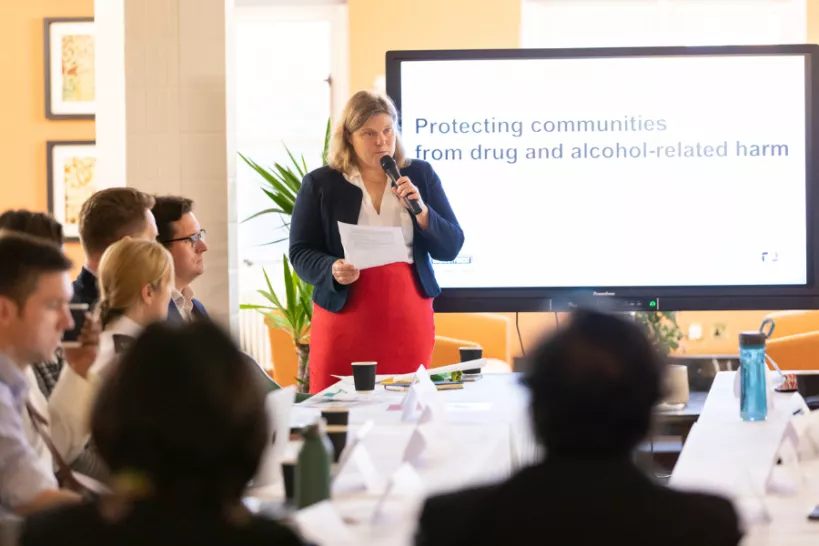Protecting Communities: our partnership plan
Last updated: 8 February 2024
Next review: 8 February 2025

In February 2024, the Council launched ‘Protecting Communities from Harm Caused by Alcohol and Drugs’, a partnership framework and delivery plan for alcohol and drugs spanning 2023 to 2025.
The plan sets out our approach to reducing the harms caused by drugs and alcohol misuse to individuals, families and communities in Waltham Forest.
Why do we care about drugs and alcohol?
- The illicit drug market is estimated to be worth £19bn nationwide, while the total cost to society in terms of health harms, costs of crime and wider impacts is considered more than twice as high.
- Nationally it is estimated that around half of all theft, burglary and robbery offences are linked to addiction to opiates and crack cocaine.
- Drugs are a major driver of serious violence: it is estimated that around 4,000 teenagers across London are being criminally exploited through county lines.
- There are an estimated total of 19,105 users of any illicit drug in Waltham Forest (ages 16 to 59), including around 1,440 opiate and/or crack users.
- We know that our residents' perceptions of crime and violence are impacted by drug-driven anti-social behaviour and nuisance.
- Alcohol is the main (leading) cause of ill health, disability and death among people aged 15 to 29 in England.
- Alcohol contributes to over 200 medical conditions, such as circulatory and digestive diseases, liver disease, several types of cancers and depression.
- It is estimated that there are more than 3,100 alcohol- dependent drinkers in Waltham Forest, with the majority of dependent drinkers not accessing support.
Prevention
We want fewer children, young people and adults to be harmed by drugs and/or alcohol.
We will do the following to make this happen:
- Information and advice will be made readily available to the public and professionals about drugs and alcohol risks and where to get help, including tailored packages for higher-risk groups and venues.
- Work with children, young people and families to reduce the risks of young people misusing drugs or alcohol, including exploring evidence-based interventions around resilience / risk taking.
- Ensure that vulnerable children and families, including those affected by parental substance misuses, are identified and provided with appropriate support, adopting a whole-family approach.
- Strengthen diversionary and early intervention activities for those in contact with the criminal justice system.
- Enable professionals in Waltham Forest to be confident in identifying those at risk of substance misuse, providing brief advice and helping people to access support.
- Identify and develop new routes of insight to inform our understanding of changing prevalence of alcohol and drug use in the local population.
Supply
We will relentlessly disrupt drugs markets and tackle the harm they cause in communities.
We will do the following to make this happen:
- Underpin our supply reduction efforts, building a deeper understanding of drugs markets and investing in our capability to drive proactive operations.
- Relentless disruption of drug dealers and the networks which support them.
- Tackle the harms associated with public space drug use and drug dealing.
- Identify at an early stage vulnerable persons being exploited in their home by substance misusers and drug dealers.
- Robustly tackle drug-related offending.
Treatment
We want all young people and adults with substance misuse problems to be supported into effective, high-quality treatment services, and achieve good recovery outcomes.
We will do the following to make this happen:
- Reduce the proportion of those with substance misuse problems who are not accessing treatment (unmet need), with a particular focus on opioids.
- Increase the proportion of those with substance misuse needs who are released from prison and successfully engage in community substance misuse services (continuity of care).
- Deliver excellent quality and outcomes within substance misuse services, including continually reviewing and improving quality.
- Reduce the number of drug and alcohol-related deaths.
- Deliver better-integrated services, ensuring people’s physical and mental health needs are addressed to reduce harm and support recovery.
Find out how we will achieve each of the above steps in the full delivery plan.